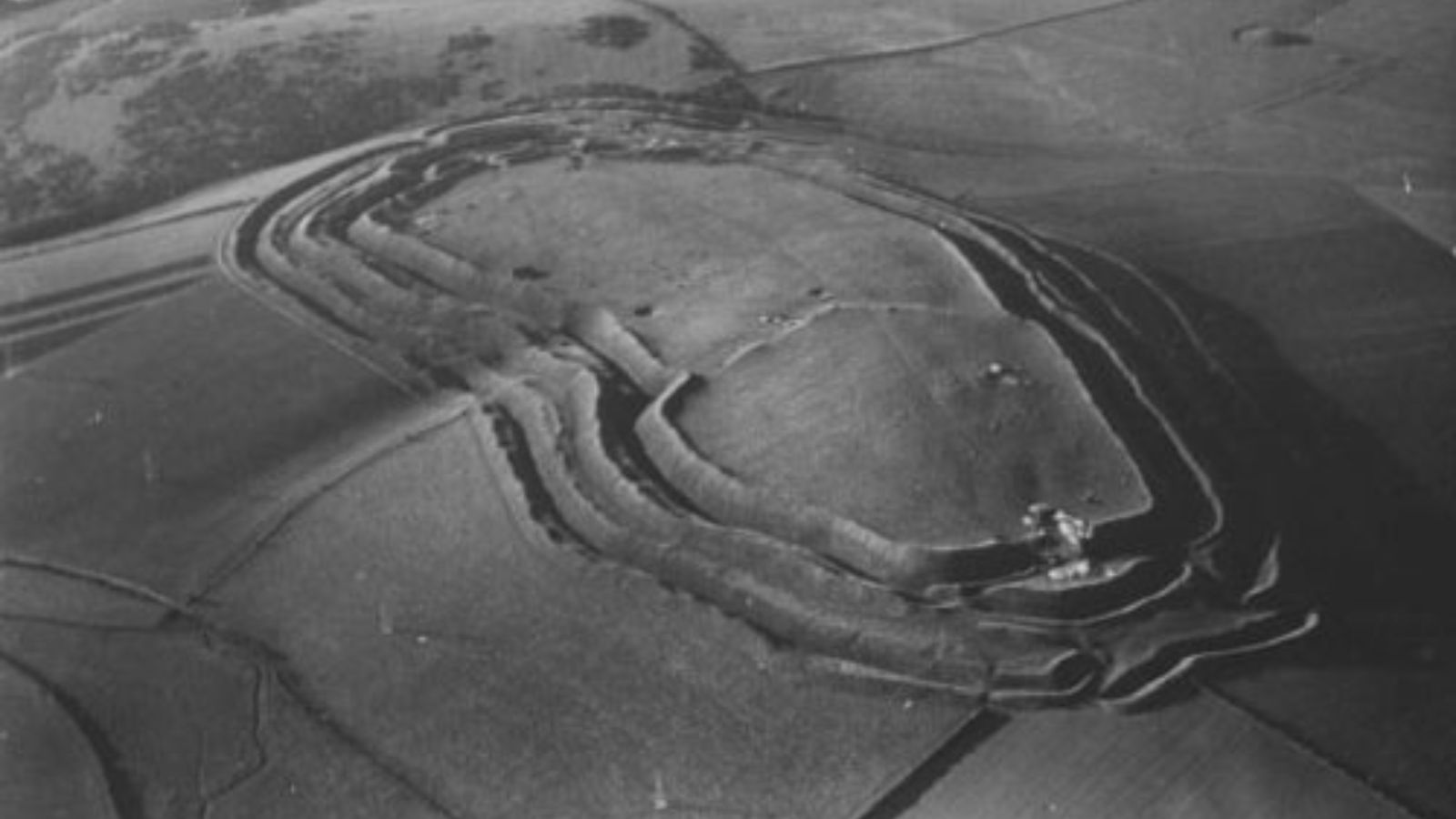The United Kingdom is home to many of the world’s most impressive ancient attractions. From iconic standing stones to towering hillforts and giant images carved into hillsides, these locations, oft steeped in mystery, provide a tantalizing glimpse into millennia-old epochs. Here are 14 of the most famous.
1. Stonehenge (Wiltshire)
Stonehenge is a UNESCO World Heritage site and one of the most famous prehistoric monuments in the world. It consists of a ring of standing stones, each around seven feet wide, 13 feet high, and weighing approximately 25 tons. Built in several stages between circa 3000 and 1500 BCE, Stonehenge’s exact purpose remains a mystery, but experts believe it could have served as a ceremonial or religious site.
2. Avebury (Wiltshire)
Avebury is a Neolithic henge monument containing the largest stone circle in Europe, which surrounds the village of Avebury. Constructed and altered throughout the third millennium BCE (roughly 2850 until 2200 BC), it consists of a large circular bank and ditch with a ring of standing stones. Like Stonehenge, its purpose is not fully understood, but it likely had religious and ceremonial significance.
3. Hadrian’s Wall (Northern England)
Built by the Romans in the 2nd century CE, Hadrian’s Wall stretches 73 miles (which would have been 80 Roman Miles – a unit of length equivalent to 1480 meters) across northern England. It was constructed as a defensive fortification against the “Barbarians”. Today, it is a UNESCO World Heritage site and a popular destination for hikers and history enthusiasts.
4. Skara Brae (Orkney)
Another UNESCO Site, Skara Brae is a remarkably well-preserved Neolithic settlement dating back around 5000 years. Located on Scotland’s Orkney Islands, it consists of eight stone houses connected by passageways, making it one of the oldest known villages in Northern Europe. The site could have supported up to 100 people, and offers a fascinating glimpse into the daily lives of its ancient inhabitants.
5. Tintagel Castle (Cornwall)
Tintagel Castle is a medieval fortification located on the rugged coast of Cornwall. Associated with the legend of King Arthur, it has a history dating back to at least the Roman period, when it may have been an outpost for the Empire. The ruins visible today date mainly from the 13th century, but the site has evidence of earlier occupation, including a Dark Age settlement.
6. Silbury Hill (Wiltshire)
Silbury Hill is an imposing Neolithic mound located near Avebury, built around 2400 BC. Standing roughly 100 feet high and over 520 feet wide, it is the largest man-made prehistoric mound in Europe. Apparently, its construction would have required half a million tons of material. Despite numerous archaeological investigations, its purpose remains uncertain.
7. Maiden Castle (Dorset)
Maiden Castle is one of the largest and most complex hillforts in Europe. Covering an area of around 47 acres, it has evidence of human occupation dating back 5000 years. Excavations have found everything from flint tools from the late Stone Age to Bronze Age burial mounds and the bodies of Iron Age warriors, buried with victuals to take with them into the afterlife. The foundations of a Roman temple can be seen to this day. The earthworks defy belief. The hilltop stretches over 900 meters, and a series of ditches – many over 6 meters deep, extend all the way around it. Everything would have been chiselled, dug, and moved by hand. Fun fact: Its name, Maiden Castle, derives from the old Celtic word “Mai Dun,” which means “great hill.”
8. The Ring of Brodgar (Orkney)
The Ring of Brodgar is a Neolithic stone circle located on the Mainland of Orkney. Dating back to around 2500 BCE, it originally consisted of 60 stones, although only 36 remain today. An impressive site, the circle’s diameter stretches for over 100m. That makes the Ring of Brodgar one of the UK’s biggest stone circles. It is now part of the Heart of Neolithic Orkney World Heritage Site.
9. Castlerigg Stone Circle (Cumbria)
Castlerigg Stone Circle is one of the earliest stone circles in Britain, dating back to the Neolithic period, around 3000 BCE. Situated in the Lake District National Park, it’s an atmospheric place with stunning views of the surrounding mountains. The purpose of the stone circle is unknown, but it could have been a trading post, a site for social gatherings or religious ceremonies, or even somewhere for astronomical observations.
10. Old Sarum (Wiltshire)
Old Sarum is an ancient hillfort and location of the earliest settlement of Salisbury, South-West England. Its history could date back over 5,000 years – Stonehenge and Avebury are both close by. The site has been occupied by various peoples, including the Romans, Saxons, and Normans. The remains visible today include the ruins of a medieval castle and cathedral.
11. Uffington White Horse/White Horse Hill (Oxfordshire)
White Horse Hill is home to the Uffington White Horse, a “prehistoric hill figure” carved into the chalk hillside. It would have been made by digging deep trenches and filling with them crushed white chalk. Believed to date back over 3,000 years, it is one of several such figures found in the English countryside. The site also includes Iron Age hillforts and burial mounds.
12. Glastonbury Tor (Somerset)
Glastonbury Tor – once an island in a shallow sea – is a prominent hill overlooking the town of Glastonbury. It has a long history of myth and legend, being associated with Avalon, the Isle of the Blessed from Arthurian legend. Other legends say the Holy Grail is buried here. Either way, the iconic site has archaeological evidence of occupation since Neolithic times and includes the ruins of the 14th Century ruins of the church of St. Michael – a single tower atop the Top.
13. Callanish/Calanais Standing Stones (Isle of Lewis, Scotland)
The Callanish Stones are a collection of standing stones arranged in a cruciform pattern on the Isle of Lewis in the Outer Hebrides, Scotland. Dating back around 5000 years, they are one of the most significant prehistoric sites in Scotland and are thought to have had ritualistic and/or astronomical purposes – although the exact purpose remains a mystery.
14. The Giant’s Causeway (County Antrim, Northern Ireland)
The Giant’s Causeway is a unique geological formation on the coast of Northern Ireland. Comprising thousands of interlocking basalt columns, it was formed by volcanic activity around 50 to 60 million years ago. According to local legend, it was built by the Irish giant Finn McCool in his bid to fight his Scottish rival, Benandonner. Today, the Giant’s Causeway is a UNESCO World Heritage site and a popular tourist destination.

